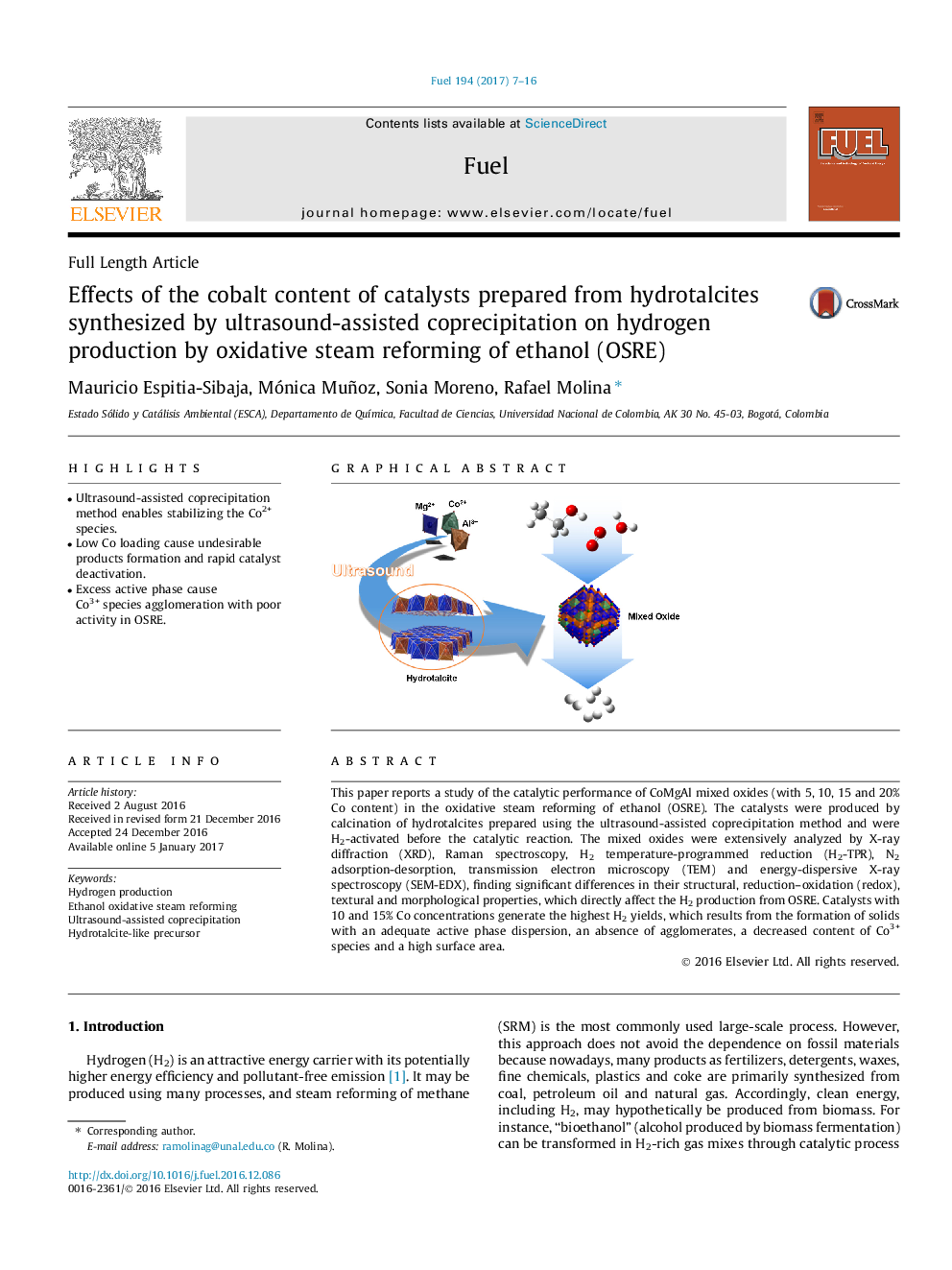| Article ID | Journal | Published Year | Pages | File Type |
|---|---|---|---|---|
| 6475413 | Fuel | 2017 | 10 Pages |
â¢Ultrasound-assisted coprecipitation method enables stabilizing the Co2+ species.â¢Low Co loading cause undesirable products formation and rapid catalyst deactivation.â¢Excess active phase cause Co3+ species agglomeration with poor activity in OSRE.
This paper reports a study of the catalytic performance of CoMgAl mixed oxides (with 5, 10, 15 and 20% Co content) in the oxidative steam reforming of ethanol (OSRE). The catalysts were produced by calcination of hydrotalcites prepared using the ultrasound-assisted coprecipitation method and were H2-activated before the catalytic reaction. The mixed oxides were extensively analyzed by X-ray diffraction (XRD), Raman spectroscopy, H2 temperature-programmed reduction (H2-TPR), N2 adsorption-desorption, transmission electron microscopy (TEM) and energy-dispersive X-ray spectroscopy (SEM-EDX), finding significant differences in their structural, reduction-oxidation (redox), textural and morphological properties, which directly affect the H2 production from OSRE. Catalysts with 10 and 15% Co concentrations generate the highest H2 yields, which results from the formation of solids with an adequate active phase dispersion, an absence of agglomerates, a decreased content of Co3+ species and a high surface area.
Graphical abstractDownload high-res image (110KB)Download full-size image
